At some point in your career as a business leader or CEO you may have to address and deal with the challenging situation of conflict resolution. Whilst we may all like to work in an organisation that’s free from conflicts and disagreements, we know that isn’t realistic. Conflict resolution it is a type of communication that helps us collaborate to solve problems and improve our environments so we can thrive within them, despite the fact many still fear conflict.
“Whenever you are in conflict with someone, there is one factor that can make the
difference between damaging your relationship and deepening it. That factor is attitude.”
William James
What is conflict resolution?
Conflict resolution is the process by which two or more parties work towards a solution to a dispute or a problem. All parties must work together to solve the problem in a productive and collaborative manner.
- Conflict may occur between co-workers, or between supervisors and subordinates, or between service providers and their clients or customers.
- Conflict can also occur between groups, such as management and the work force, or between whole departments.
- Some conflicts are essentially arbitrary, meaning it doesn’t matter who wins only that the problem is resolved so everyone can get back to work.
But some conflicts reflect real disagreements about how an organisation should function. Below is an example of a case study to help you understand ways in which to find a solution.
Executive Summary
A few weeks after Jamie joined the senior management team of Business Z as CFO there were major repercussions with one other member on the management team (Samantha the COO), and unfortunately there was a wider impact amongst the work force. Whilst there was complexity around the overlap of roles for both parties being a CFO and a COO, additionally there was personality classes and several misunderstandings that could have been easily addressed before the conflict arose.
The most important aspect addressed relatively quickly by the CEO and the HR director was to fully understand the issues at hand, how they might find a solution swiftly and ensure no members of the team were either impacted too severely or in fact left the business.
Fortuitously for Business Z, Charlie the HR director, was also a trained mediator and knew the best possible tools to help alleviate the problems, identify potential solutions so that all parties could move forward in a more aligned and professional manner. By creating a safe, impartial setting for both parties to explore their working relationship, a resolution could be found to both the workplace and employment conflicts.
“In the middle of difficulty lies opportunity.”
Albert Einstein
Setting the scene
Jamie joined his new company in Washington DC as the CFO a newly created position to build upon the already successful tech company. As part of his role, it was established that the finance and admin team would need added inspiration and motivation, an overall assessment of their strengths and weaknesses together with a full evaluation of the financial position of the business. What came about for Jamie was one huge conflict with the existing COO – Samantha.
With their major differences and despite having both spoken to the CEO – Addison, the process was becoming time consuming, stressful, and whilst their departments overlapped the impact was being felt through-out the entire business environment. As a new employee Jamie realised it was necessary to quickly find a solution before either he or Samantha felt the strain so intensely to leave the business.
Samantha felt very at ease and comfortable in her role as COO for some three years, and whilst the extended team that supported her had become lack lustre in their roles, equally the business needed to shift up a gear and hire a CFO to work alongside her. Scaling quickly from a start-up tech business to a multi-million-dollar turnover had been a tremendous result for the business and the team; yet with that came its challenges of working long-hours, firefighting, lack of commitment from the team and the need for more structure.
Jamie joined from a much more corporate background that focused on structure, responsibilities, results, the investors and ultimately one of clarity, vision and creating added opportunities. He was aware of some of the key challenges the firm faced however had not expected a full-on personality clash with Samantha the COO. Whilst they had met briefly, it was ultimately the Founders and CEO’s decision to hire him and both Jamie and Samantha didn’t have enough time to engage – a common trait that happens in senior management roles.
Imminent issues
It didn’t take long to evaluate what the specific issues were. Here are some of them.
- Lack of communication
- Competition
- Avoidance tactics
- Zero compromise
- Hiring without full engagement of those working closely together (for example, Samantha and Jamie should have meet previously)
- Consideration given to personality tests and or leadership styles (check out our leadership quiz on the home page)
- Clear and defined roles
- Understanding of a new structure and foundation
- Better onboarding process for Jamie
- Creating a welcoming and warm environment for all new recruits
Conclusion
The HR director Charlie quickly stepped up once learning of the rumble amongst the workforce and having been approached by Addison to quickly find a solution. As mentioned above Charlie was a trained meditator a great business asset and skillset and was able to bring both Jamie and Samantha together to discuss and clarify the issues and concerns.
“The most difficult thing in any negotiation, almost, as making sure
that you strip it of the emotion and deal with the facts”.
Howard Baker
Whilst it took two half days of negotiation, thinking creatively about their needs and interests, it was clear that whilst the management team has decided to recruit Jamie as the CFO they had not clearly identified and streamlined what roles would be covered by Jamie and by Samantha the COO.
Of course, both roles should be working collaboratively by fully supporting each other and whilst one individual came from a more corporate structure and background, the other was more entrepreneurial and less structured – compromise was needed.
As most businesses grow there is a need for defined roles, job descriptions and clarity on role reporting and responsibilities – this was a perfect example where it had not been managed in advance. Again, a huge reminder to build camaraderie, trust, authenticity, and integrity amongst the team.
With the correct mediation, advice, support, and guidance they were able to resolve the issues, build upon a better working relationship rather than spiralling out of control. Read on to look more at the specifics.
Recommendations
In this scenario must of the problem could have been abated early on. The business learned it was necessary to address the following issues: –
- Clear and defined roles for all staff members
- A full staff SWOT analysis
- Added personality tests for all employees to learn about themselves and their peers
- Assurance that where a recruit was employed time was spent with those they would be in contact with daily
- Added moral support given to the team
- CEO created an open-door policy once a week to eliminate the hierarchy and can’t approach issue
- Weekly team lunches where team members and departments go to learn more about each other’s lives not just the business
- Putting plans in place to look at team bonding
Implementation
Whilst Charlie in combination with both Jamie and Samantha came up with the recommendations above management quickly realised the need for a more pragmatic and engaging approach to team communication and enhancing the recruitment process.
Management skills for conflict resolution
- Active listening – being fully present with each party and the conversation.
- Emotional intelligence – having the ability to perceive and understand others and your own emotions.
- Patience – taking the time to create a long-term solution not just a quick fix.
- Positivity – with a positive outlook and attitude you can help others feel more at ease.
- Honest and open communication – applying this throughout will benefit all involved and create a more authentic way to nurture the relationships going forward.
- Calm – remaining calm may seem challenging, however it is important to not add to an already fuelled and intense situation.
Utilising these six simple management skills will truly help you come to a sustainable solution for all parties concerned. Above all remember to show a willingness to compromise or collaborate, don’t take anything personally, prioritise resolving the conflict over being right, pay attention to non-verbal communication and ultimately remember the important of the relationship.
“People will forget what you said, they will forget what you did,
but they will never forget how you made them feel.”
Maya Angelou
How did you deal with the last conflict in your business or life? Ask yourself what else might you learn from the case study above.
Thinking about how conflict is manifesting in your business or life? Still in need of some added advice and guidance – then book in a Genius Zone Consult to discover what your current challenges are and explore how I can support you in solving those challenges.
NB. Whilst the case above is reflective of a true and live situation, it has been anonymised and all names have been changed to ensure confidentiality.


